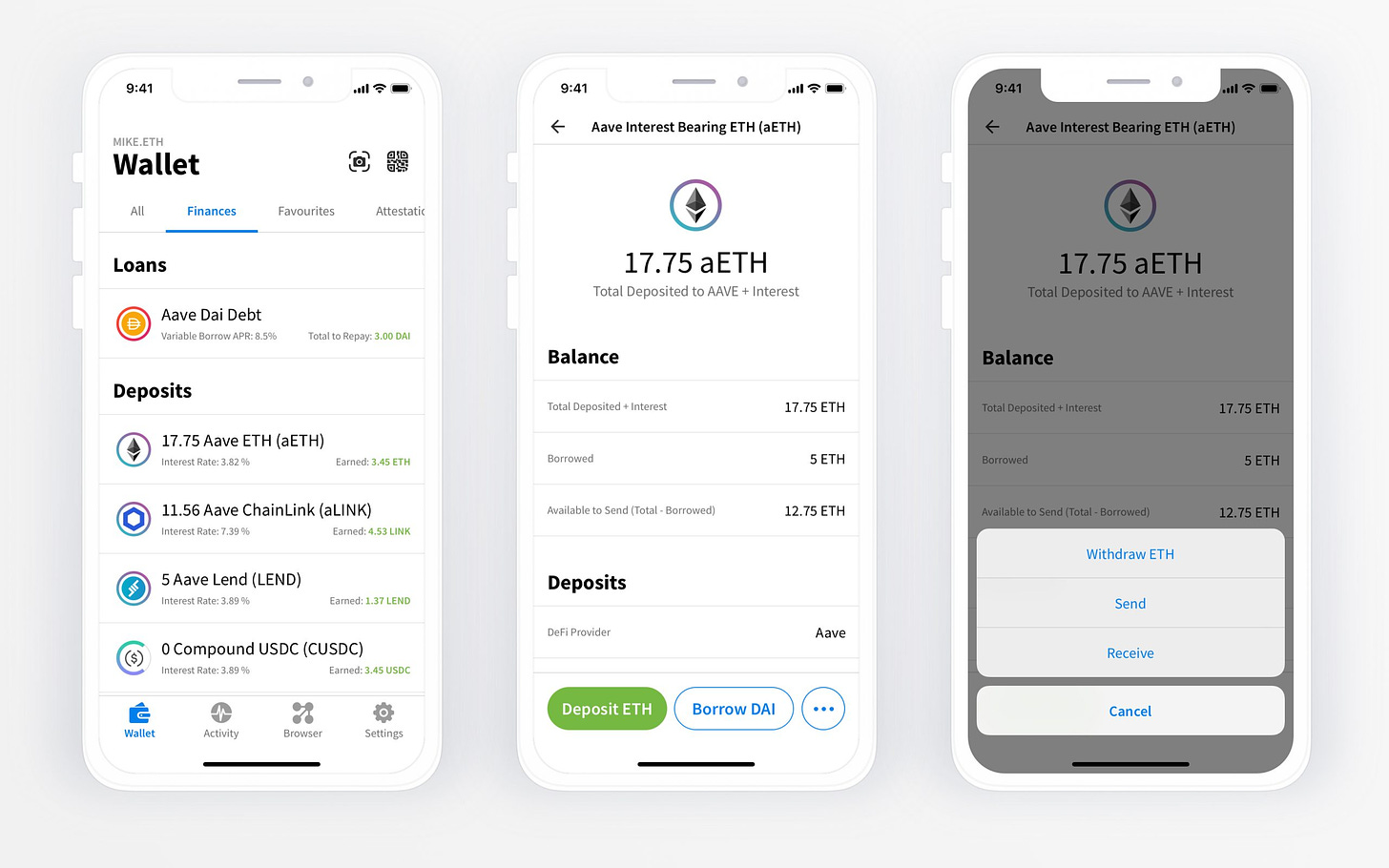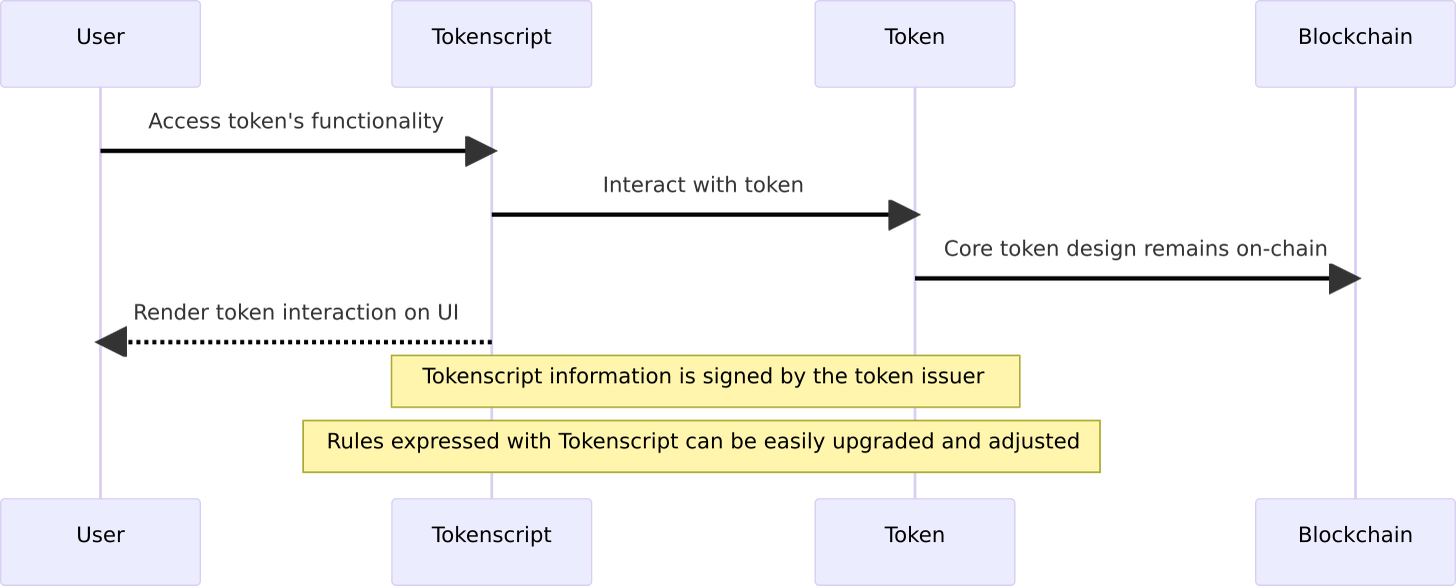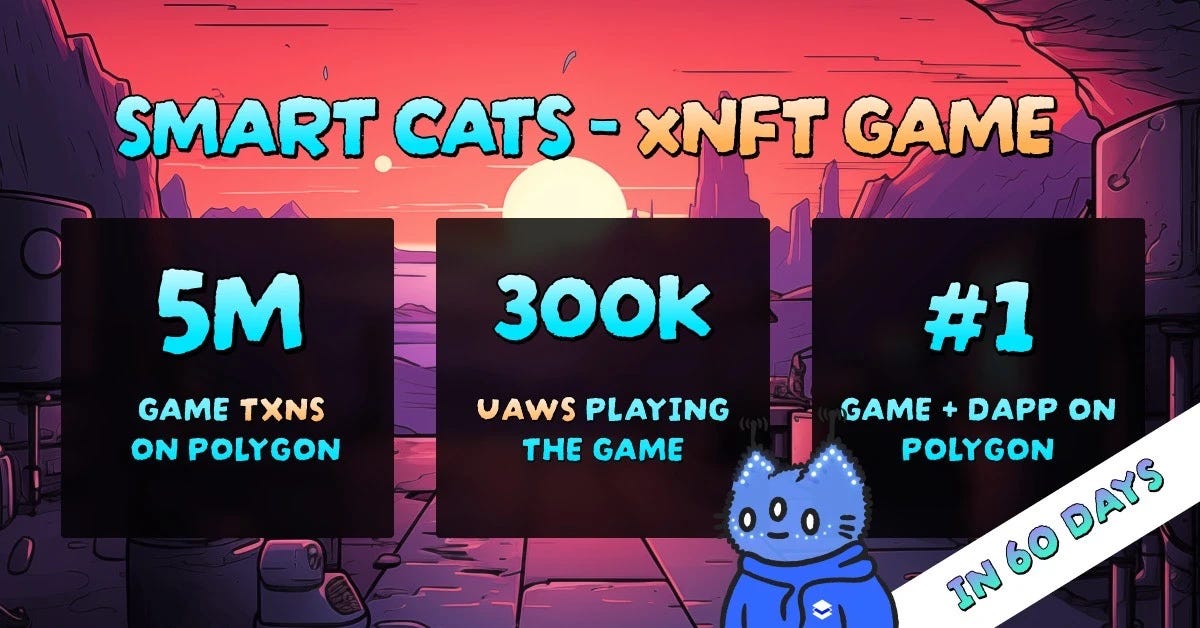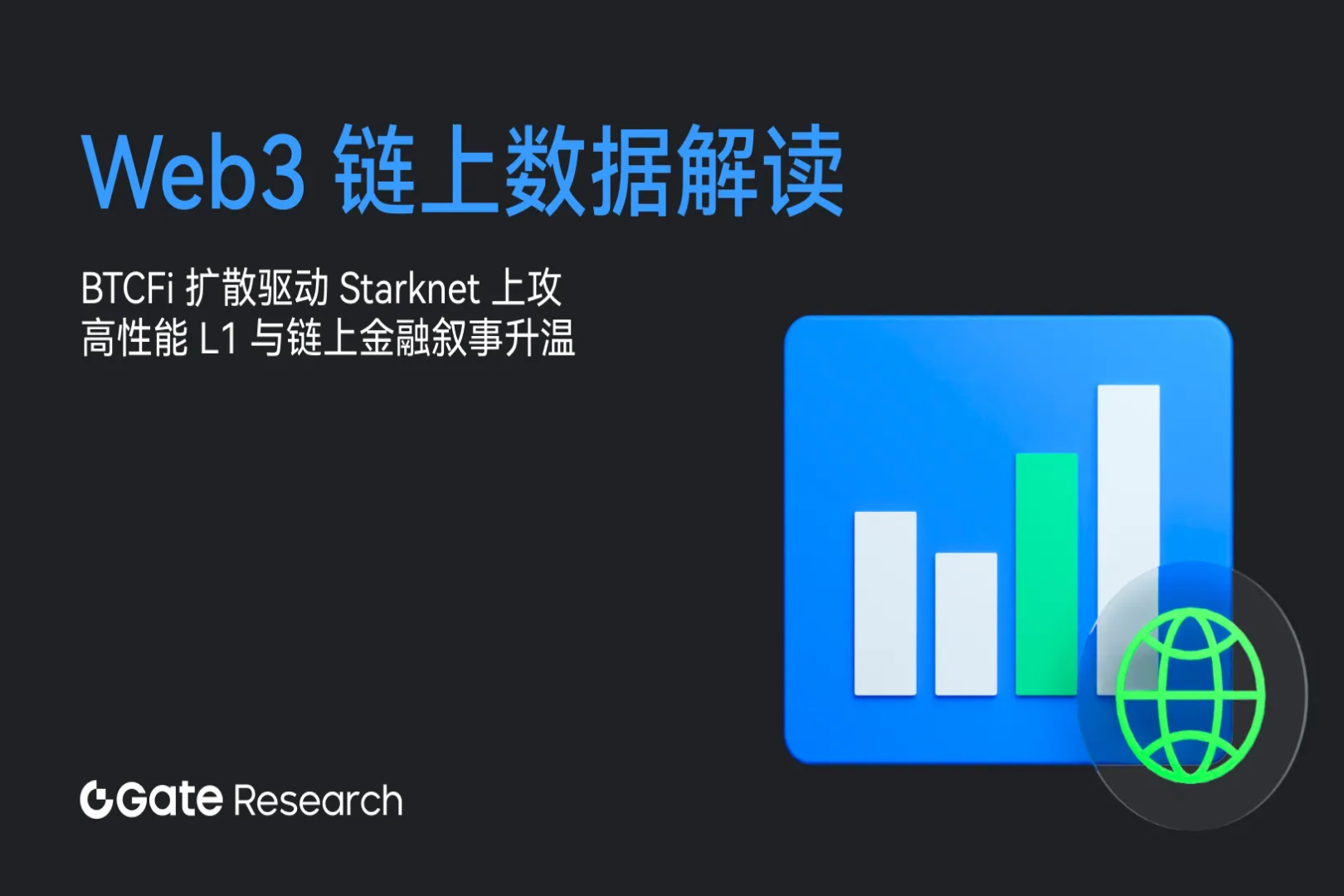ERC-5169和TokenScript为何需要Smart Layer?
When the AlphaWallet team proposed the TokenScript concept in 2019, it significantly expanded the industrys understanding of tokens. Whether it is ERC-20 or ERC-721, by adding the extension capability of TokenScript, it is easier to execute the preset functions. After the ERC-5169 standard was proposed, its programming and execution capabilities were improved. Their next milestone, Smart Layer Network, is another upgrade based on these foundations, further extending the boundaries beyond the blockchain.
Or it can be understood this way:
TokenScript: Provides a secure, programmable token front-end for tokens;
ERC-5169: Call the corresponding token front end through the token contract;
Smart Layer Network: Cooperate with the blockchain to extend off-chain logic and execution for tokens.
Smart Layer can be seen as a service layer that connects the blockchain world and traditional network services and provides support and incentives, making it easy to tokenize network services or integrate smart tokens, thereby providing a better user experience and improving Business efficiency. For token issuers, Smart Layer provides support for creating and managing programmable smart tokens. For traditional web services, Smart Layer simplifies the process of integrating web services and token functionality.
Smart Layer redefines the token economy to some extent. Tokens are no longer just an asset, but can promote the development of economic activities by integrating rights, functions and systems.
TokenScript
TokenScript is a programming interface specially designed for tokenization proposed by Smart Token Labs in 2019. This interface not only helps users access all functions of the token, but also allows the creation of more advanced, complex and flexible user token interactions.
Simply put, TokenScript is a JavaScript code layer with XML tags that describes token-related attributes, logic, operations, user interface and other elements. TokenScript files are issued and signed by the corresponding token issuer and can be imported by any service or device integrated with the TokenScript engine. And token issuers can add any information and rules to the tokens without being restricted by smart contracts. The main focus of Tokenscript is to allow tokens to run seamlessly between different platforms and wallets while integrating all information about the token to facilitate users to manage and understand their assets. Currently, the AlphaWallet wallet supports all tokens implemented with the TokenScript standard.
We can imagine TokenScript as a computer program for processing music files. The music files are similar to tokens and are unchanged, but the playback software can be flexibly switched. The program also updates automatically to record, cut, and organize audio into your favorite song library. TokenScript also ensures that the interaction between tokens and software is not arbitrary and is structured by the token issuer.
ERC-5169
TokenScript improves the scalability of tokens. But in order to allow tokens to interact with various services and applications in the Web3 ecosystem, Smart Token Labs proposed the Ethereum standard in May 2022ERC-5169 (has become Final status). This standard introduces the concept of executable scripts, allowing tokens to carry their own logic and behavior and have stronger interactive capabilities. TokenScripts can be embedded in tokens according to the ERC-5169 standard, allowing tokens to exhibit dynamic behavior when interacting with various services and platforms.
In terms of specific implementation, ERC-5169 allows users to ensure that they are using the correct script by providing a URI pointing to the official script when calling the token contract (scriptURI). The URI can be any URI that conforms to the RFC-3986 standard, such as a link to an IPFS multihash, GitHub gist, or cloud storage service. Every contract that implements this ERC contains a scriptURI() function that returns the download URI of the client script that provides the client executable for the escrow token. Additionally, to address the key risk, operational and storage fees associated with storing client scripts directly on smart contracts, ERC-5169 allows volatile data to be stored off-chain.
ERC-5169 provides many possibilities for interactive tokens that can connect Web2 and Web3, including customizing miniDapps for individual tokens, allowing users to interact with contract functions not provided by wallets, extending hardware wallets, and even allowing users to Tokens control IoT devices. From an asset perspective, this standard significantly improves the user experience, allowing users to run programs directly within the wallet and avoid the hassle of frequently creating account numbers and passwords. In addition, since the logic is embedded in the token itself, the need for external interfaces is reduced and the security and privacy of token interactions are increased.
Tokenscript + ERC-5169 =?
Hashed partner Baek Kim has said that Hashed’s investment philosophy begins with all assets eventually being tokenized. In fact, we have experienced two waves of tokenization so far, but they have yet to trigger mass adoption. In order to achieve large-scale application of tokenization, we must solve two core problems:
How to let users get a better experience through tokenization?
How can enterprises gain greater efficiency through tokenization?
This is exactly what Smart Token Labs has always wanted to achieve: fragment all services into a smart token (executable tokens and executable NFTs). Users have all the rights to call and use these smart tokens, and can Access various third-party services through them. For example, we can issue a Car Smart Token to represent the ownership of the car. When users access third-party services, such as insurance companies, through this smart token, they do not need to fill in any information. Through smart tokens, insurance companies can directly recommend suitable insurance products to users. In addition, insurance can also be turned into a token corresponding to a “Car Smart Token”.
The realization of this vision benefits from Smart Token Labs integrated application of ERC-5169 and TokenScript. According to the ERC-5169 standard, TokenScript defines scripts that can be embedded into tokens and allow these tokens to interact with various services and platforms in a dynamic manner. By transforming tokens from simple asset attributes into functional tokens, smart tokens not only improve asset scalability but also bring new development paths to areas such as Web3 games and loyalty programs.
Web3 games:
Smart tokens can be used as in-game props to connect users and project parties. Users can call various functions encapsulated in tokens within the project partys digital services, such as completing specific in-game tasks and cross-game achievements.
Smart Cats is a fully on-chain derivative collection of Cool Cat #2426 launched by Smart Layer on Polygon, and is also a smart token. The NFT can run directly in the wallet like an application. Users can directly click on the Smart Cats and conduct various interactions without jumping to a third-party website, including feeding, cleaning, and inviting other Smart Cats to play.
Open Loyalty:
In 2023, Smart Token Labs CTO Weiwu Zhang introduced the concept of “Open Loyalty” at EDCON 2023, and collaborated with the EDCON 2023 team to launch the “Open Loyalty” permissionless solution Permissionless Perks. Attendees will receive proof of ticket ownership via email and can store it locally in their browser, verify the ticket to any third party and claim a number of exclusive benefits.
Through Smart Layer, users do not need to open wallets or consume Gas. They can obtain specific identity-based rights and interests by verifying off-chain smart tokens through URLs, and the ticket information that should belong to the EDCON ticketing system is now held by users, saving money. The process that originally required the EDCON ticketing system to integrate with a third party was eliminated.
AI agent:
As all service providers tokenize their services, the smart token system will gradually be built into a modular framework. This framework can maximize the possibility of service invocation, thereby maximizing service value. For integrators, it also means a more open integration market and lower integration costs. In the future, with the combination of smart token systems and artificial intelligence, when modular service ownership exists in the hands of users, users can authorize AI agents to freely call smart tokens from different websites and achieve personalized customized services through combination.
Decentralized service network Smart Layer Network
As the integration hub of the tokenized network, smart tokens encapsulate business logic, allowing tokens to carry out complex interactions with various systems and tokens in an interoperable mode. But blockchain can only provide trust guarantees and cannot allow smart tokens to be used directly on any website. We still need to scale with integrations. To this end, Smart Token Labs has launched Smart Layer, a programmable blockchain-based service network that introduces smart tokens into games and loyalty through ERC-5169 and Tokenscript.
The goal of Smart Layer is to facilitate the deployment and operation of smart tokens and TokenScript. From a website perspective, Smart Layer is similar to a RESTful API provider, allowing smart tokens to interact with websites, IoT, smart contracts, and more. For token issuers, Smart Layer provides support for creating and managing programmable smart tokens. For traditional web services, Smart Layer simplifies the process of integrating web services and token functionality. This architecture can help improve the usability and interoperability of smart tokens, making them easier to apply in different scenarios.
Smart Layer mainly implements its functions through three key components:
Blockchain: Execute token transaction rules through smart contracts and maintain snapshots of token operations for future verification.
Anchor node: An organization selected by the DAO and responsible for maintaining the stability, security and service goals of the network.
Service Node: distributes service work through distributed hash tables and provides TokenAPIs for integration. Service nodes are incentivized by Smart Layer Tokens, and payments are made by users or websites that require token integration and are attached to API calls as incremental commitments. Smart contracts are responsible for processing payments and can burn a certain percentage of Smart Layer Tokens.
Smart Layer Tokens incentivize nodes in this network to provide resources to the network. Both types of nodes are rewarded with Smart Layer Tokens by participating in network activities, and are proportional to the amount of resources they contribute. This incentive mechanism ensures continuous growth and sustainable development of the network.
Smart Layer has been launched on the test network on January 15 and is expected to be launched on the main network in 2025. Although it was launched less than half a year ago, Smart Layer has already shown its development potential. Its xNFT game Smart Cats attracted the participation of more than 300,000 independent active wallets in just 60 days after its launch, becoming one of the most popular games in the Polygon ecosystem. The public beta version of Smart Layer Launchpad launched earlier this year received more than 1,000 applications from developers in just 10 days.
Airdrop coming soon?
As the market recovers, the popularity of airdrops has revived. Smart Layer is also planning to conduct airdrops in the near future. Specific information will be announced in stages in the next few weeks. According to available information, Smart Layer is powered by two different tokens, the governance token SLN and the service unit token SU. Among them, governance tokens are the main tokens, and holders can vote on protocol decisions and receive direct income and token rewards from operating nodes. This shows that the value of the SLN token is directly related to Smart Layer network size and adoption. According to the current data of the Smart Layer test network, in less than 10 days since its launch, it has supported more than 3 million executable NFTs and generated more than 9.2 million transactions. No matter how they plan the airdrop plan, they can start by experiencing Smart Cats or subsequent products.






